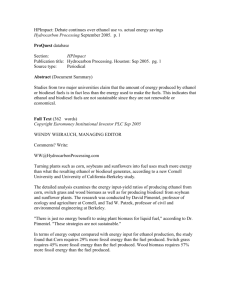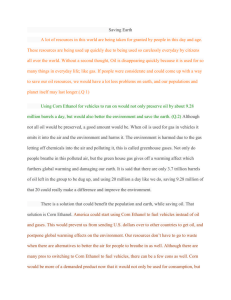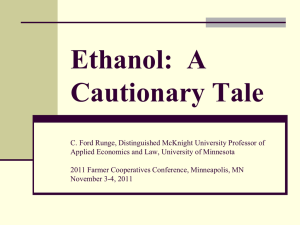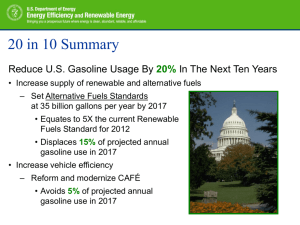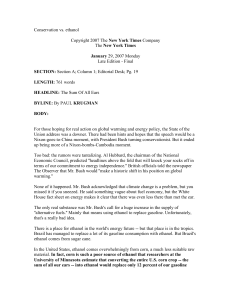Editorial: Green Plants, Fossil Fuels, and Now Biofuels
advertisement
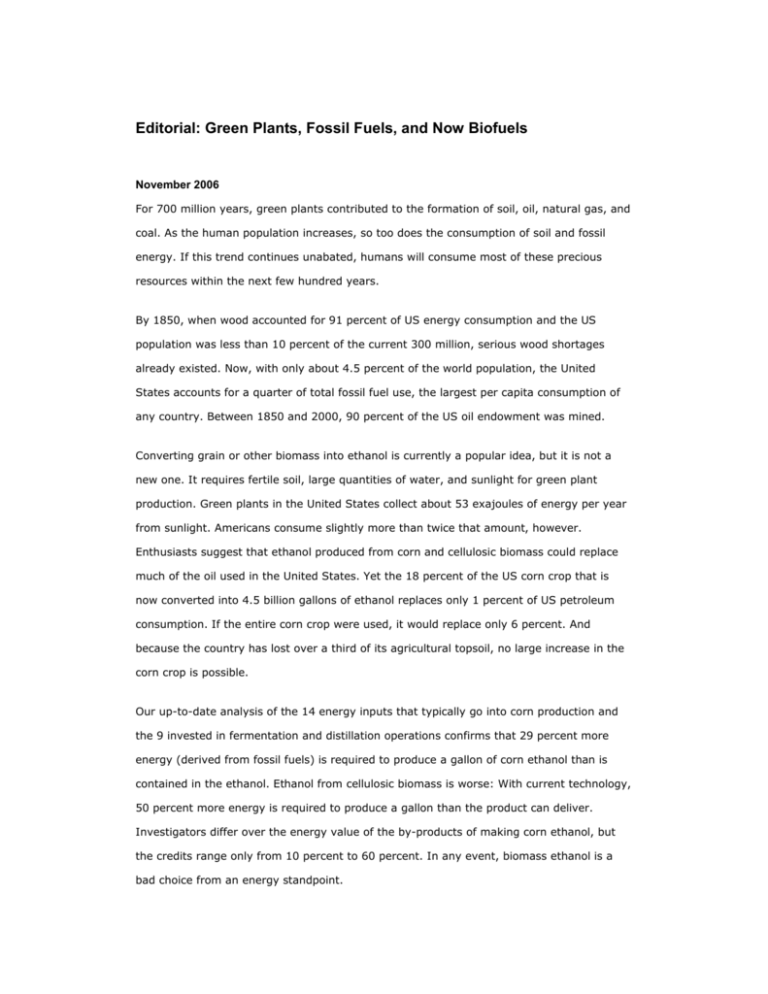
Editorial: Green Plants, Fossil Fuels, and Now Biofuels November 2006 For 700 million years, green plants contributed to the formation of soil, oil, natural gas, and coal. As the human population increases, so too does the consumption of soil and fossil energy. If this trend continues unabated, humans will consume most of these precious resources within the next few hundred years. By 1850, when wood accounted for 91 percent of US energy consumption and the US population was less than 10 percent of the current 300 million, serious wood shortages already existed. Now, with only about 4.5 percent of the world population, the United States accounts for a quarter of total fossil fuel use, the largest per capita consumption of any country. Between 1850 and 2000, 90 percent of the US oil endowment was mined. Converting grain or other biomass into ethanol is currently a popular idea, but it is not a new one. It requires fertile soil, large quantities of water, and sunlight for green plant production. Green plants in the United States collect about 53 exajoules of energy per year from sunlight. Americans consume slightly more than twice that amount, however. Enthusiasts suggest that ethanol produced from corn and cellulosic biomass could replace much of the oil used in the United States. Yet the 18 percent of the US corn crop that is now converted into 4.5 billion gallons of ethanol replaces only 1 percent of US petroleum consumption. If the entire corn crop were used, it would replace only 6 percent. And because the country has lost over a third of its agricultural topsoil, no large increase in the corn crop is possible. Our up-to-date analysis of the 14 energy inputs that typically go into corn production and the 9 invested in fermentation and distillation operations confirms that 29 percent more energy (derived from fossil fuels) is required to produce a gallon of corn ethanol than is contained in the ethanol. Ethanol from cellulosic biomass is worse: With current technology, 50 percent more energy is required to produce a gallon than the product can deliver. Investigators differ over the energy value of the by-products of making corn ethanol, but the credits range only from 10 percent to 60 percent. In any event, biomass ethanol is a bad choice from an energy standpoint. Moreover, the environmental impacts of corn ethanol are enormous. They include severe soil erosion, heavy use of nitrogen fertilizer and pesticides, and a significant contribution to global warming. In addition, each gallon of ethanol requires 1700 gallons of water (mostly to grow the corn) and produces 6 to 12 gallons of noxious organic effluent. Using food crops, such as corn grain, to produce ethanol also raises major ethical concerns. More than 3.7 billion humans in the world are currently malnourished, so the need for grains and other foods is critical. Growing crops to provide fuel squanders resources; better options to reduce our dependence on oil are available. Energy conservation and development of renewable energy sources, such as solar cells and solar-based methanol synthesis, should be given priority. David Pimentel College of Agriculture and Life Sciences, Cornell University Tad Patzek Department of Civil and Environmental Engineering, University of California–Berkeley



